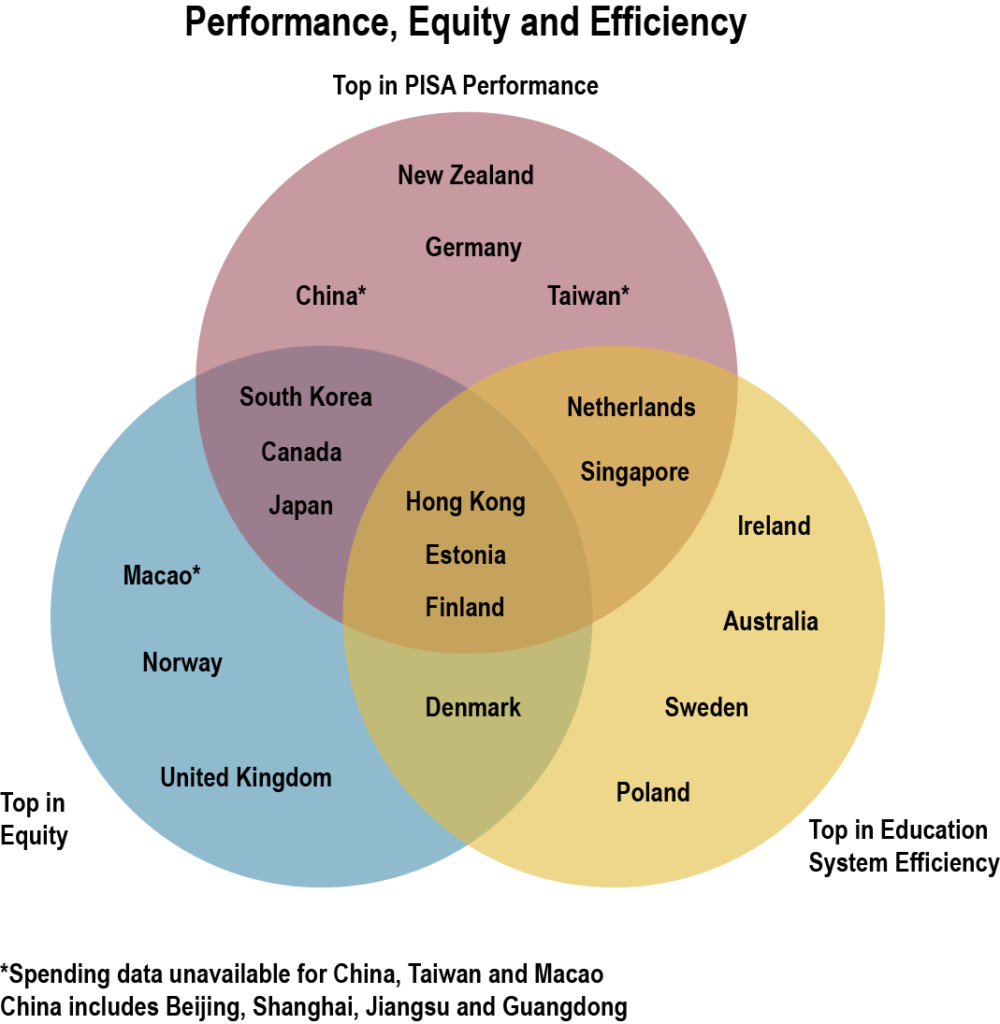Along with high overall student performance, the best education systems in the world also strive for equity in the performance of students of all socio-economic backgrounds and efficiency in public spending on education. This month’s stat takes a look at those three measures among systems scoring above the OECD average in at least one subject (math, reading and/or science) on PISA 2015.
 Sources: OECD PISA 2015, OECD Education at a Glance 2016. Hong Kong and Singapore spending data from World Bank and Singapore Ministry of Education, respectively.
Sources: OECD PISA 2015, OECD Education at a Glance 2016. Hong Kong and Singapore spending data from World Bank and Singapore Ministry of Education, respectively.
Student Performance:
Countries in the red circle above are the top performers from PISA 2015 across all three subjects. These education systems are featured on CIEB’s website, with individual country profiles and comparative data charts comparing important performance indicators like percentage of resilient students (those students from the lowest socioeconomic backgrounds who nevertheless score at the top of PISA) or demographic indicators like the percent of immigrant students in each system. For more on how these countries structure their education systems and their strategies for improvement see CIEB’s country profiles.
Equity:
The education systems featured in the blue circle above had the lowest percent of variation in performance on PISA 2015 science explained by socio-economic status. That is, poverty has a relatively small effect on student performance in these systems. Many education systems with high student performance are also able to achieve high rates of equity, including South Korea, Japan, Canada, Hong Kong, Estonia and Finland. For more on this, see the CIEB’s policy page on equity in top-performing education systems.
Efficiency:
The yellow circle above includes countries that spend the least per secondary school student as a percentage of GDP per capita while still managing to score well on PISA. Several countries have among the highest scores on PISA while spending relatively little per student including the Netherlands, Singapore, Hong Kong, Estonia and Finland. Top performer Estonia, for example, is able to achieve very high performance on PISA while spending about $5,909 USD per secondary student, while the United States, with student performance not much above the average of all systems, spends more than twice as much per secondary student at $13,587 USD.
Shown in the center of the Venn diagram, three education systems—Finland, Estonia and Hong Kong—perform well in all three categories. These systems are able to offer their students a quality education regardless of socio-economic background at a low cost and still come out at the top of the international league tables for overall student performance. For more on how these systems are structured and what the United States and others can learn from them, visit their country profiles on CIEB’s Top-Performing Countries site.





